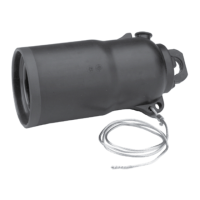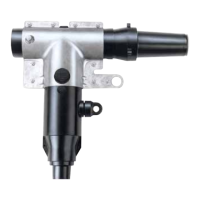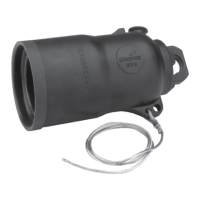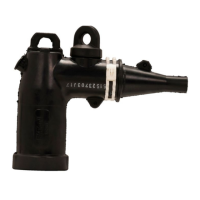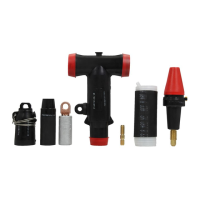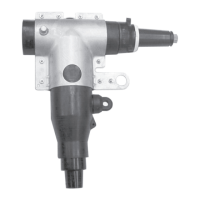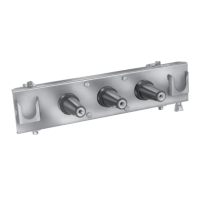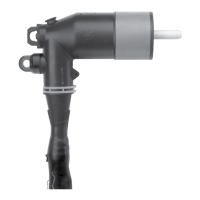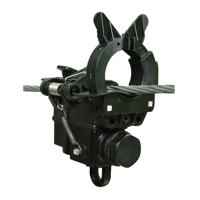40 OPERATION AND INSTALLATION INSTRUCTIONS MN280075EN July 2018
Form 6 microprocessor-based rack-mount recloser control
MN280067ENType MET Electronic Recloser Control Tester
Operating Instructions for proper setup and use of the
METTester.
Use the wiring harness KME6-1732 accessory to connect
the MET tester to the Form 6 rack mount control. Refer to
Table16 for connection information. The wiring harness
has a connector on one end for connection to the control
receptacle on the MET Tester. The other end of the wiring
harness has insulated locking fork terminals for connection
to the Form 6 rack mount recloser control.
Table16. Wiring Harness KME6-1732 Wire Color and
Corresponding Connection Point
Pin Color
Connection
Point
A BLACK TB6-1
B WHTE TB6-2
C RED TB6-4
D GREEN TB6-3
E ORANGE TB6-6
F BLUE TB6-5
G WHT/BLK TB2-1
H RED/BLK TB2-3
J GREEN/BLK TB2-5
K ORANGE/BLK TB2-8
Closing the recloser during testing
Electrical closing – solenoid-operated reclosers
Line voltage is required for automatic recloser operation
during testing of reclosers equipped with a closing
solenoid (except for reclosers equipped with the low
voltage closing accessory).
WARNING
Hazardous voltage. Interconnect source leads X and Y
and ground solidly to the recloser tank (Figure38). Do
not connect lead Z to any other phase or mechanical
ground. Dangerous voltages to ground exist on
the phase connected to lead Z. Solidly ground all
equipment. Failure to comply can result in severe
personal injury and/or equipment damage. T224.1
For on-line testing, bypass the recloser, open the load-side
disconnects and keep the source-side disconnects closed.
This will remove the recloser from service, but will keep line
voltage supplied to the closing solenoid (Figure36).
WARNING
Hazardous voltage. The switchgear (apparatus and
control) and high-voltage transformer must be in a test
cage or similar protected area to prevent accidental
contact with the high-voltage parts.
Solidly ground all equipment. Failure to comply
can result in death, severe personal injury, and
equipment damage. T221.5
For shop testing, the closing solenoid voltage is supplied
by back-feeding a transformer with a low-side rating equal
to the voltage rating of an available power source, and a
high-side rating equal to the voltage rating of the recloser
(Figure38). A 75 kA transformer of the proper voltage rating
with an impedance drop of approximately 3% is satisfactory.
The AC source must have a comparable impedance drop.
A test circuit for these solenoid-closed reclosers is shown
in Figure38. The following equipment is required for the
recommended shop testing setup:
ote:N Solenoid-closed reclosers equipped with a 120- or
240- VAC low-voltage closing coil accessory can be
tested as shown in Figure39.
Variable Autotransformer T1, 230 Volts, 20 Amps.
Low-Voltage transformer T2 to simulate fault conditions.
Ratio and size will depend upon the maximum current
to be used. The recloser presents a low impedance to
the transformer, so secondary voltage must be only
high enough to force the required current through the
secondary of the transformer and the recloser.
ote:N An alternative method of providing the necessary
current through the transformer is shown in
Figure37.
High-Voltage T3 to operate the closing solenoid.
The closing coil requirement is approximately 200 kVA
during the two-to-three cycle closing operation. The
solenoid coil operating voltage must be maintained
at the recloser bushings during the cycle interval
the closing coil is energized. This procedure is not
used on reclosers equipped with the low-voltage
closingaccessory.
Ammeter with a rating based on the level of
testcurrent.
Current-actuated timer.

